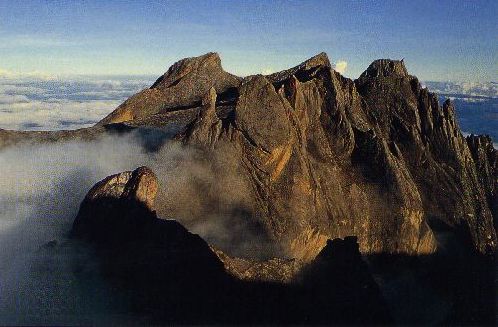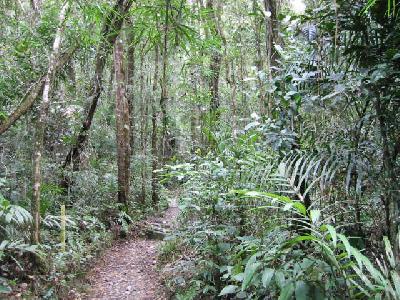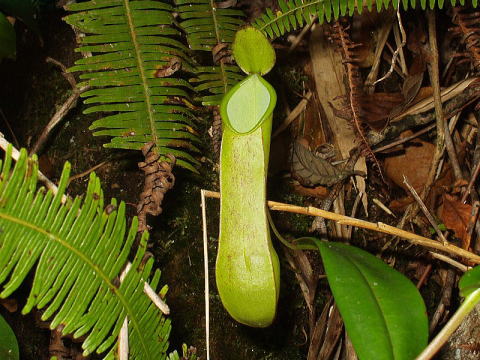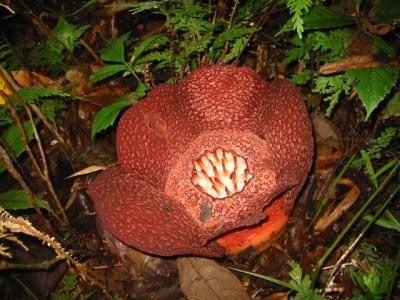|
www.shejapan.com > World Heritages > Kinabalu Park
Quiz:
|
|
|
|
<青山学院大学 経済学部 経済学科 石崎 洋平>
1. Where is Kinabalu Park?
2. What country is Kinabalu park in?

Brief description:
Kinabalu Park, in the State of Sabah on the northern end of the island of Borneo, is dominated by Mount Kinabalu (4,095 m), the highest mountain between the Himalayas and New Guinea. It has a very wide range of habitats, from rich tropical lowland and hill rainforest to tropical mountain forest, sub-alpine forest and scrub on the higher elevations. It has been designated as a Centre of Plant Diversity for Southeast Asia and is exceptionally rich in species with examples of flora from the Himalayas, China, Australia, Malaysia, as well as pan-tropical flora..
Kinabalu Park was established in 1964, following the passing of the Sabah National Parks Ordinance in 1962. Mount Kinabalu and its surrounding area became a park as a consequence of the infamous "Sandakan-Ranu Death March". In September 1944 the Japanese moved 2,400 Australian and British prisoners of war from Sandkan to Ranau, a distance of 240km.
 Only six prisoners survived. One of the survivors profoundly affected by the experience,
Major Carter, formed the Kinabalu Memorial Committee,
with the aim of preserving Kinabalu as a monument for the decency of man and a facility for the enjoyment of all of Sabah.
Following two expeditions to explore the mountain and its flora by Professor John Corner, on behalf of the Royal Society of London,
the idea of preserving the area was further reinforced.
Corner wrote a report in 1961 entitled "The Proposed National Park of Kinabalu" and submitted it to the Governor of the Crown Colony.
In 1964 the park extended over an area of 711sq. km, this has subsequently increased in recent years.
Only six prisoners survived. One of the survivors profoundly affected by the experience,
Major Carter, formed the Kinabalu Memorial Committee,
with the aim of preserving Kinabalu as a monument for the decency of man and a facility for the enjoyment of all of Sabah.
Following two expeditions to explore the mountain and its flora by Professor John Corner, on behalf of the Royal Society of London,
the idea of preserving the area was further reinforced.
Corner wrote a report in 1961 entitled "The Proposed National Park of Kinabalu" and submitted it to the Governor of the Crown Colony.
In 1964 the park extended over an area of 711sq. km, this has subsequently increased in recent years.
Mount Kinabalu is a prominent mountain in Southeast Asia. It is located in Kinabalu National Park in the east Malaysian state of Sabah, which is on the island of Borneo in the tropics.
 In 1997, a re-survey using satellite technology established its summit (known as Low’s Peak) height at 4,095 metres (13,435 ft) above sea level, which is some 6 metres less than the previously thought and hitherto published figure of 4,101 metres (13,455 ft). The mountain is the fourth tallest in Southeast Asia behind Hkakabo Razi of Myanmar (5881 meter), Puncak Jaya (4884 meter) and Puncak Trikora (4750 meter) of Papua, Indonesia, and is therefore also the tallest in Malaysia and on the island of Borneo, which Malaysia shares with Indonesia and Brunei.
The mountain and its surroundings feature a huge variety of flora, and is one of the world’s most important[citation needed] biological sites.
The main peak of the mountain (Low's Peak) can be relatively easily climbed by a person with a good physical condition, and requires no mountaineering equipment. Other peaks along the massif, however, require rock climbing skills.
In 1997, a re-survey using satellite technology established its summit (known as Low’s Peak) height at 4,095 metres (13,435 ft) above sea level, which is some 6 metres less than the previously thought and hitherto published figure of 4,101 metres (13,455 ft). The mountain is the fourth tallest in Southeast Asia behind Hkakabo Razi of Myanmar (5881 meter), Puncak Jaya (4884 meter) and Puncak Trikora (4750 meter) of Papua, Indonesia, and is therefore also the tallest in Malaysia and on the island of Borneo, which Malaysia shares with Indonesia and Brunei.
The mountain and its surroundings feature a huge variety of flora, and is one of the world’s most important[citation needed] biological sites.
The main peak of the mountain (Low's Peak) can be relatively easily climbed by a person with a good physical condition, and requires no mountaineering equipment. Other peaks along the massif, however, require rock climbing skills.
 Significantly, Mount Kinabalu is well-known worldwide for its tremendous botanical and biological species biodiversity,
with high levels of endemism (i.e. species which are found only within Kinabalu Park and are not found anywhere else in the world).
As examples, it has one of the world’s richest orchid flora with over 800 species, over 600 species of ferns
(more than the whole of Africa’s 500 species) of which 50 are found no where else, and is the richest place in
the world for the Nepenthes insectivorous pitcher plants (five of the thirteen are found nowhere else on earth)
which reach spectacular proportions (the largest in the world being the endemic Nepenthes rajah).
Significantly, Mount Kinabalu is well-known worldwide for its tremendous botanical and biological species biodiversity,
with high levels of endemism (i.e. species which are found only within Kinabalu Park and are not found anywhere else in the world).
As examples, it has one of the world’s richest orchid flora with over 800 species, over 600 species of ferns
(more than the whole of Africa’s 500 species) of which 50 are found no where else, and is the richest place in
the world for the Nepenthes insectivorous pitcher plants (five of the thirteen are found nowhere else on earth)
which reach spectacular proportions (the largest in the world being the endemic Nepenthes rajah).
 The parasitic Rafflesia plant, which has the largest single flower in the world,
is also found in Kinabalu (particularly the Rafflesia keithii whose flower grows to a whopping 94 centimetres or 37 inches in diameter),
though it should be noted that blooms of the flower are rare and difficult to find.
A recent botanical survey of the mountain estimated a staggering 5,000 to 6,000 plant species
(excluding mosses and liverworts but including ferns), which is more than all of Europe and North America
(excluding tropical regions of Mexico) combined. It is therefore one of the world’s most important biological sites.
The parasitic Rafflesia plant, which has the largest single flower in the world,
is also found in Kinabalu (particularly the Rafflesia keithii whose flower grows to a whopping 94 centimetres or 37 inches in diameter),
though it should be noted that blooms of the flower are rare and difficult to find.
A recent botanical survey of the mountain estimated a staggering 5,000 to 6,000 plant species
(excluding mosses and liverworts but including ferns), which is more than all of Europe and North America
(excluding tropical regions of Mexico) combined. It is therefore one of the world’s most important biological sites.
キナバルの全貌を動画でご覧になりたい方は是非どうぞ。
Sabah :: サバ(地名)
endemism :: 風土性
flora :: 植物相
parasitic :: 寄生的な
whopping :: どさりと倒れること
UNESCO World Heritage site
Wikipedia
WHTour
Google image
www.shejapan.com
> World
Heritages > Kinabalu Park
Copyright(C) 2008, SHEJapan, Ltd. All Rights Reserved
© 2008 SHEJapan.com
 Kinabalu Park キナバルパーク
Kinabalu Park キナバルパーク